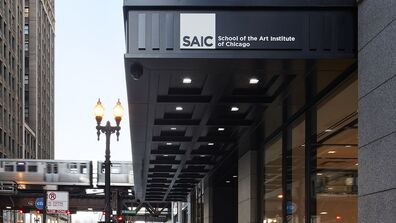
Designing What's Next
Students' Future Careers Emerge at the Design Show
by Micco Caporale (MA 2018)
Graduate School at SAIC is a time when students refine the themes and craft that drive a lifetime of work. For master’s candidates in Architecture, Interior Architecture, and Designed Objects (AIADO); Design for Emerging Technologies; and Fashion, Body and Garment, the Design Show is where they envision their futures.
Over the course of their second year, students in these programs work with a team led by esteemed curators and three graduate curatorial assistants to build the Design Show, the culmination of their time at the School. While SAIC gives students the skills and opportunities to prepare for the next phase in their creative lives, the Design Show is where they declare who they are as designers. It’s the moment when they begin their transition from the comforts of art school into the mature realities of designing for a broad audience.
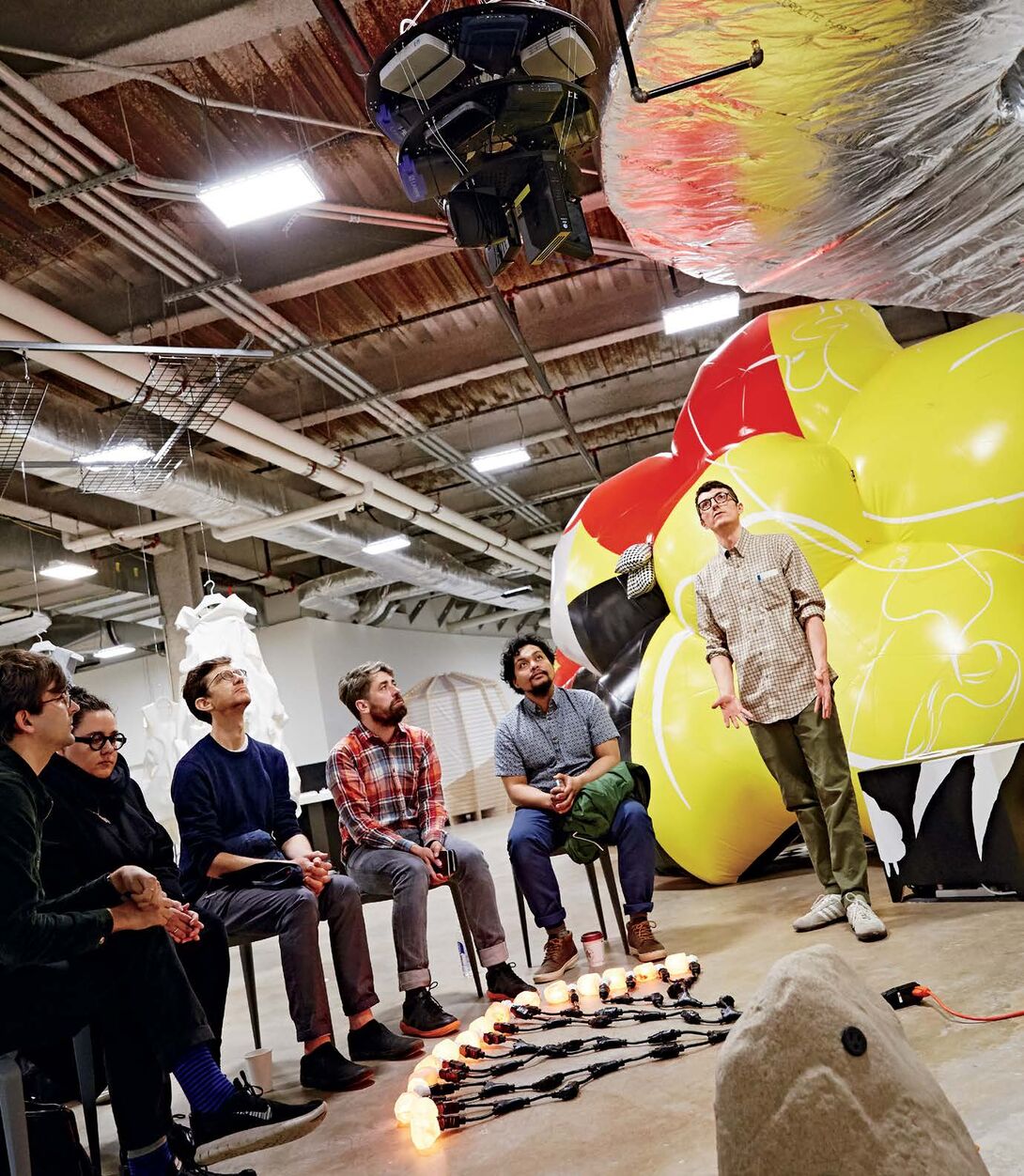
The students learned through conversations with the curators and exhibition staff to embrace that we live inside the web of design that comes out of our need for purpose—which can feel both like a constraint and a calling.
Arnold J. Kemp
After all, design is the art of everyday life. It’s the visual language coding our bodies, our landscapes, and our living spaces. That’s why the show is held at Block 37, a mixed-use space in the heart of downtown’s State Street shopping district. That’s also why the two-and-a-half-week event kicks off with public critiques, where students present their work to an international audience of guest critics from the art-and-design world, as well as lay people.
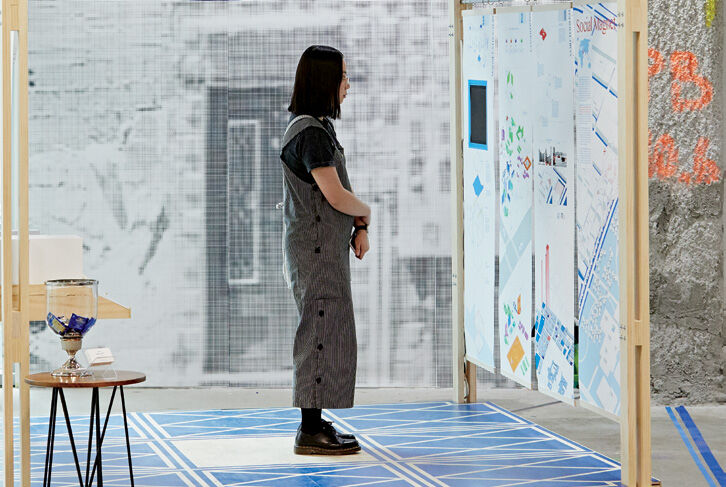
“The students learned through conversations with the curators and exhibition staff to embrace that we live inside the web of design that comes out of our need for purpose—which can feel both like a constraint and a calling,” says Arnold J. Kemp, curator of the Design Show 2018 and dean of graduate studies.
For Sarah Aziz (MArch 2017), those public critiques affirmed her work has meaning in the real world.
“The conversations I was having [in school] were very esoteric,” she recalls. During visits home, she’d struggle to explain her studies to friends and family. “When we were able to move the conversation to a public area in Chicago and engage with people outside of the profession, I felt like the concerns [we discussed in the classroom] were concerns everyone has to some degree. Those public critiques gave me a well-rounded view of architecture and what’s important to people on both sides of the discussion.”
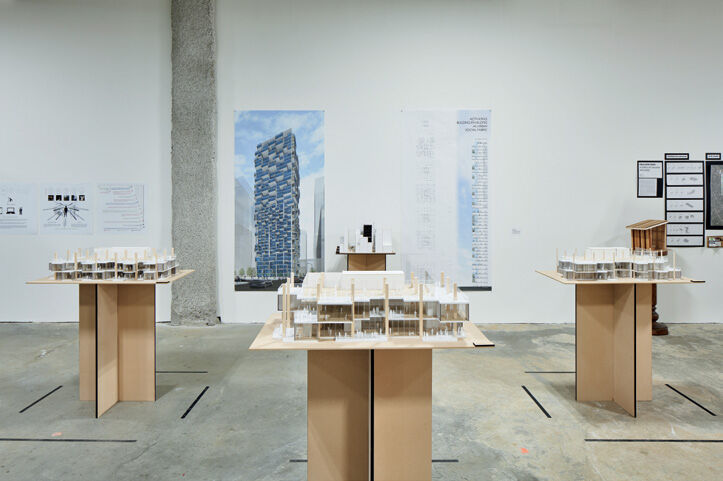
For AIADO Lecturer Ceci Gomez (MDes 2011), sharing her work with the public highlighted the interdisciplinary nature of her education. Coming from a computer science background, she thought of herself as a traditional designer.
To complete her graduate project, she collected interviews from more than 600 Mexicans in both Mexico City and Chicago and made an assortment of items for spurring conversations about what it means to be Mexican. She called the collection Objects of Identity. Following the Design Show, the National Museum of Mexican Art invited her to add the work to its permanent collection. She was being recognized as an artist. While Gomez works as a senior UX designer for IBM today, she’s still designing around questions raised in her thesis research.
Norman Teague (MFA 2016) used his work in the Design Show to reflect on growing up Black in Chicago.
“There were a lot of police and gang killings happening in the city at the time,” he says. “It was a very emotional time for me, and I felt like there needed to be more positive Black stories told.”
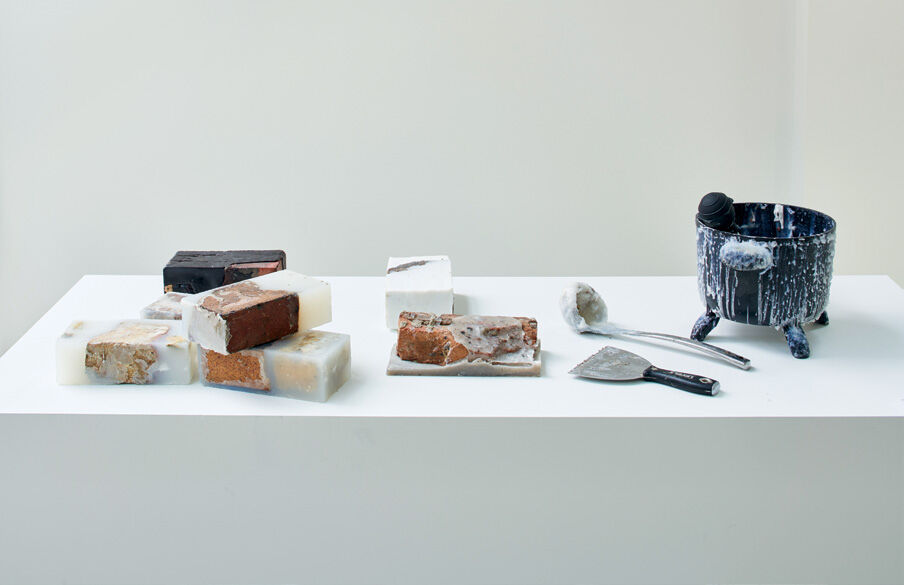
That work was part of his application for the Edes Foundation Prize for Emerging Artists, a $30,000 award that was given to graduating Master of Fine Arts students who demonstrated exceptional merit and creative potential. Upon winning, Teague used the money to start BLKHaUS Studios, a firm where “design is an agent of change to uplift and transform marginal communities.” Now he’s part of the design team working on the Obama Presidential Center.
Because SAIC’s design programs don’t subscribe to any one aesthetic or philosophic position, graduate students are given room to take risks that can have great rewards. “The plasticity means faculty are very receptive to any radical ideas,” says Aziz. When the Design Show 2019 opens in May, graduate students know they’re doing more than celebrating expressions of their time at SAIC. They’re looking ahead to lifetimes of meaningful experiments.
